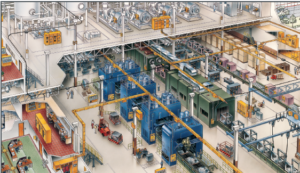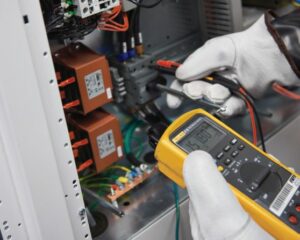Companies are continually being tasked by management to increase revenue and reduce expenses. In many instances, operating expenses are targeted, which can actually have a negative financial impact on the bottom line.
A well-administered Electrical Preventive Maintenance program reduces accidents and minimizes costly breakdowns and unplanned outages. Impending troubles can be identified, and solutions applied, before they become major problems requiring more expensive, time-consuming solutions.
The ultimate goal of a preventive maintenance program is ensuring that all electrical equipment and components operate safely and reliably as originally designed and intended. Studies of electrical equipment maintenance show a strong correlation between the level of maintenance and the reliability of the equipment.
Breakdowns may also put workers in harm’s way to repair equipment. Planned maintenance activities provide fewer opportunities for workers to improvise.
Facility managers should know what the monetary impact of an unplanned outage means to their respective operations. However, when an event happens, the focus is usually on restoring power as quickly as possible and at all costs. Often, the tangible and intangible costs are not accounted for during the event.
The generally-accepted industry ‘rule of thumb’ states that reactive maintenance is three to four times more costly than preventive maintenance. However, a ‘rule of thumb’ statistic can be hard to sell to management when budgets are tight.

Creating an Electrical Preventive Maintenance Program
Step 1: Assess the Current State of the Electrical System
Prior to initiating a preventive maintenance program, have a short circuit analysis and a time current coordination study of all of the power distribution systems to ensure equipment is properly rated, set and labeled.
Additionally, an up-to-date single-line diagram of the electrical system provides clear and precise information concerning the exact interconnections of all electrical equipment.
Step 2: Clearly Communicate Expectations to the Service Provider
A comprehensive preventive maintenance and testing program should incorporate detailed policies, procedures, and maintenance activities for the entire electrical power distribution system, regardless of the manufacturer.
The facility’s management needs to clearly communicate to the service provider:
- Which equipment is included in the maintenance program.
- The specific order the electrical equipment should be removed from service for maintenance.
- The detailed scope of work for each piece of equipment or component, such as:
- Electrical testing (insulation and current path)
- Mechanical testing (functionality and sequencing)
- Visual inspection to ensure proper set-up and function
- Control and protection schemes to verify proper sequencing and automated operation.
Following are recommended items or equipment to incorporate into a Preventive Maintenance Program:
- Monitoring equipment
- Protective relays
- Circuit breakers
- Panelboards
- Transformers
- UPS systems
- Optional stand-by generators
- Metering equipment
- Service-entrance switchgear
- Switchboards
- Motor control centers
- Automatic transfer switches
- Busway
- Bonding and grounding systems.
Step 3: Planning for Outages
With FEW exceptions, electrical equipment should NOT be cleaned, inspected, maintained, serviced, or tested while it is energized.
- When planning for an outage, ‘critical’ equipment should be identified and scheduled.
- Arrangements for temporary electrical power should be made, if needed.
- Above all, it is management’s responsibility for onsite personnel safety, whether for in-house or third-party electrical workers.
The recommended maintenance and testing interval for outages may need to be altered if any of these factors exist:
- Potential of safety equipment failure

- High repair cost equipment installed
- Extreme operating environment
- Poor equipment condition
- High operating load and ratings
- High cost of downtime to production
- Performance history of equipment.
Conclusion
Lowered reliability, especially in the realm of electrical systems, increases the risk of both employee safety and of downtime-related lost business productivity.
Not servicing or maintaining your equipment at worst is dangerous, and at best is pushing larger costs out to a later date. Guidance can be found in the standard AS/NZS 3019:2007 Electrical Installations – Periodic Verification.

